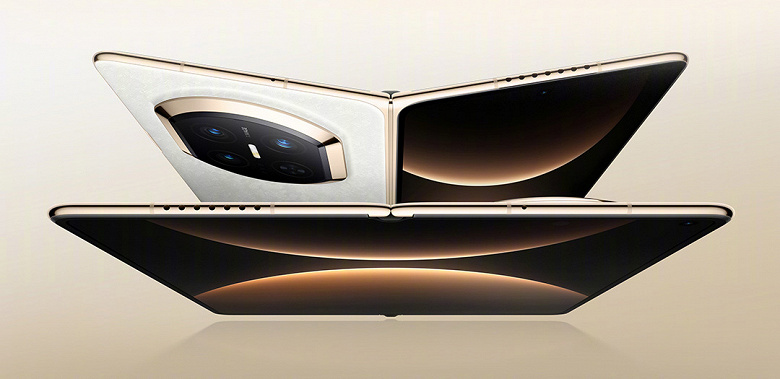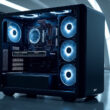Innovative Design and Configuration Options
Huawei officially unveiled its cutting-edge foldable smartphone, the Mate X7. Available in five distinctive configurations, the pricing structure is as follows: 12/256 GB – $1830; 12/512 GB – $1970; 16/512 GB Collector’s Edition – $2110; 16 GB/1 TB Collector’s Edition – $2250; and an ultra-premium 20 GB/1 TB Collector’s Edition (with stylus) – $2480.

The Mate X7’s striking aesthetics come in five colors, and it boasts an incredibly lightweight design at just 235 grams. When unfolded, it measures a sleek 4.5 mm, becoming a compact 9.5 mm when closed. The flagship device features upgraded ultra-reliable hinges, while the Collector’s Edition incorporates second-generation Xuanwu Kunlun tempered glass for added durability. Standard models use second-generation Kunlun glass. This model assures protection against dust and water complying with IP58 and IP59 standards.
Display and Performance
The external screen offers a 6.49-inch display with Full HD+ resolution, a refresh rate of 120 Hz, and a dazzling peak brightness of 3000 nits. Meanwhile, the internal screen stretches to 8 inches with a resolution of 2416×2210 pixels, a consistent 120 Hz refresh rate, and a peak brightness of 2500 nits.

The Mate X7 is powered by a robust 5600 mAh battery, supporting 66-watt wired and 50-watt wireless charging. Notably, it includes an ‘Expedition’ mode, enhancing its autonomy up to an impressive 10 days.
Advanced Camera System
With a focus on photographic excellence, the primary camera features a 50-megapixel sensor with variable aperture, a 3.5x optical zoom periscope lens, an ultra-wide-angle module, and a 40-megapixel sensor. The Collector’s Edition’s main camera boasts a 1/1.28-inch sensor, which reportedly captures double the light of the iPhone 17 Pro Max. Additionally, the periscopic module with an F/2.2 aperture lens captures 127% more light than its iPhone rival.
Connectivity and Communication
The Collector’s Editions break new ground supporting dual satellite connectivity with Tiantong and Beidou systems, while standard versions include Beidou support.








